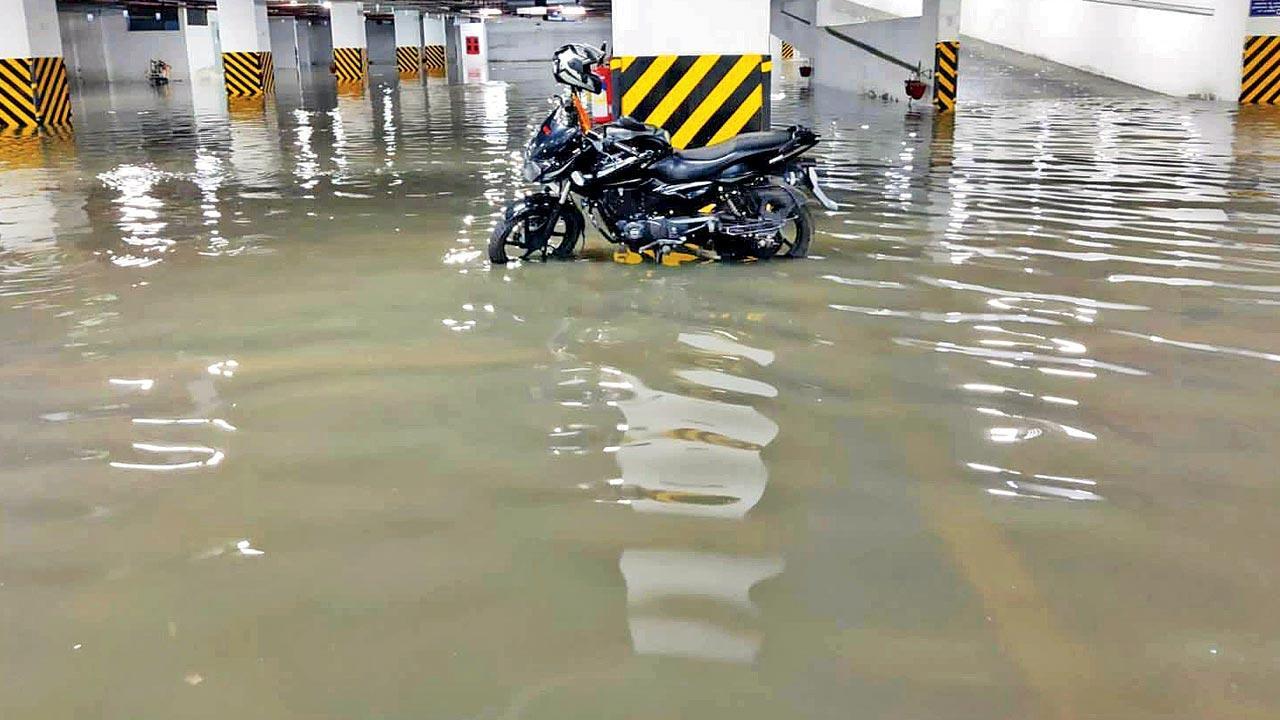We tend to complain more than we should about a little water disrupting our homes and lives every other year

The nicest thing about this whole flooding episode is how the government of Bangalore simply decided to not acknowledge the situation. Pic/Twitter
 I watched numerous videos of the city of Bangalore going under water, over the past few weeks. There were horrified comments accompanying every clip that surfaced and went viral. Some residents complained about how the state government had let them all down, while others pointed out—on LinkedIn, obviously—that this would send the rest of the world the wrong kind of message about how India’s self-proclaimed Silicon Valley was anything but a developed city. Still others did what millions of us have begun to do more often over the past eight years or so: asking those complaining to get out of the city and move elsewhere.
I watched numerous videos of the city of Bangalore going under water, over the past few weeks. There were horrified comments accompanying every clip that surfaced and went viral. Some residents complained about how the state government had let them all down, while others pointed out—on LinkedIn, obviously—that this would send the rest of the world the wrong kind of message about how India’s self-proclaimed Silicon Valley was anything but a developed city. Still others did what millions of us have begun to do more often over the past eight years or so: asking those complaining to get out of the city and move elsewhere.
ADVERTISEMENT
The videos made me wonder why we get as upset as we do when our cities and towns flood and lead to significant losses. It happens every year, and we know it will for the rest of our lifetimes because it has been happening since we were all children; so why not make the most of it and celebrate these floods as an inescapable part of the Indian experience? If we can accept air, water, and noise pollution as part of our heritage during every festival, why not incorporate all of these avoidable natural disasters into our tourism campaigns?
What these videos always do is remind me of what happened in Bombay 17 years ago, on July 26. For those of us stranded in offices for over 48 hours, it has become an event of mildly mythical proportions. We still talk about the automobiles we saw floating down the street, or the crowds of people offering free food to those compelled to try and walk home. I recall volunteers manning rope bridges to make sure people could navigate roads without falling into open manholes, and the aftermath of those floods that left cars adorning sidewalks and shrubs like oversized ornaments.
Sure, 1,094 people may have died (officially, that is) but you don’t see us complaining about it when our city floods every monsoon, do you? We roll up our trousers, prepare for fevers or leptospirosis, and wade out into the streets in search of a rickshaw or taxi. I find that spirit of apathy missing in the people of Bangalore and wish they would try and put a more positive spin on things the way we have been trained to do.
The nicest thing about our floods is the publicity it got us. In 2007, National Geographic presented a documentary on the event, titled Mumbai Mega Flood. It was like our very own Hurricane Katrina, and it was an entirely home-grown ‘Made in India’ phenomenon. Then, two years later, we even got a big screen movie using the floods as a backdrop. It was called Tum Mile and involved a couple trying to reconcile during the disaster unfolding around them. One scene involved the hero being electrocuted by a cable after falling into the floodwater. I thought it was a great example of using government incompetence to create something entertaining.
There were tragedies this time around too. Bombay was flooded, people were stranded in various pockets, and it took a few days for things to settle down. There were the usual reports in newspapers of why this was happening, warnings about unchecked development, and reminders of how the illegal destruction of our city’s mangroves would lead to worse flooding in years to come. And then, a few days after those reports, we simply went about our business as labourers continued working on our fabulous new coastal road. I think that is the way other Indian cities need to tackle their own tragedies.
The nicest thing about this whole episode is how the government of Bangalore simply decided to not acknowledge the situation. MPs did yoga poses for their Instagram handles, there were a few usual controversies about religious sentiments being hurt, and no one said anything about why the city had been brought to its knees yet again. The callousness was refreshing.
I hope the government uses these inevitable tragedies in a more efficient manner the way some countries exploit their natural wonders for tourism. I hope they commission a marketing agency to use these videos of submerged cars and flooded parking lots to show the West how urban India can offer visitors a glimpse of what the world was like before World War II. I can even picture the advertising campaigns, and their taglines: ‘Welcome to Bangalore. Come for the low-cost labour. Stay for the swimming pools in your living rooms.’
When he isn’t ranting about all things Mumbai, Lindsay Pereira can be almost sweet. He tweets @lindsaypereira
Send your feedback to mailbag@mid-day.com
The views expressed in this column are the individual’s and don’t represent those of the paper
 Subscribe today by clicking the link and stay updated with the latest news!" Click here!
Subscribe today by clicking the link and stay updated with the latest news!" Click here!







